IEA vice president
Arnaldo Pangrazzi
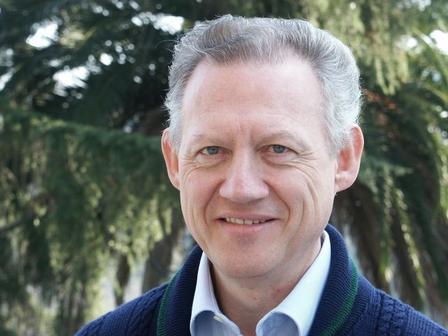
Arnaldo Pangrazzi Vice President AIE (Italian Enneagram Association) is professor of pastoral care and clinical pastoral education at Camillianum.
He has animated numerous courses on health care ministry, helping relationships, group dynamics and the enneagram in several countries, including Italy, Spain and South America.
Paulo Coelho, in his novel “Brida” published in 1990, indicates that every human being in the course of his or her existence, can adopt two attitudes: build or plant.
Flipping through the pages of Liliana Atz’s text, the feeling is of conversing more with a cultivator and a farmer than with a mason or an architect.
As a farmer you lay seeds belonging to two traditions on the ground so that they grow together and bear fruit; but the garden is always an open construction site. On the one hand, the ground on which it seeks to lay seeds is Western culture with its own way of reading reality, which is compared with the holistic approach of the East.
On the other, and on a parallel thread, the perspective of Traditional Chinese Medicine (TCM) is proposed in dialogue with the enneagrammatic view in reading the human project and the conditions for its “well-well-being” or the reasons for its “ill-being.”
At the heart of the treatment is the health project read through the lens of TCM and the enneagrammatic perspective, in a comprehensive view of the person.
In the articulation of the various chapters, Atz explores the points of contact and parallel readings of the two systems in promoting health through the balances contemplated by both and the causes for the occurrence of diseases–related to the imbalance of centers or energies–the significance of the different organs and their relationship to feelings and so on.
The text is enriched with many tables, to read systematically the contributions of the systems compared, and is made more convincing through concrete examples.
In the words of Marcel Proust, “The true voyage of discovery consists not in finding new lands, but in having new eyes.”

Master of Qi Gong and Taiji Quan
Joseph Paterniti
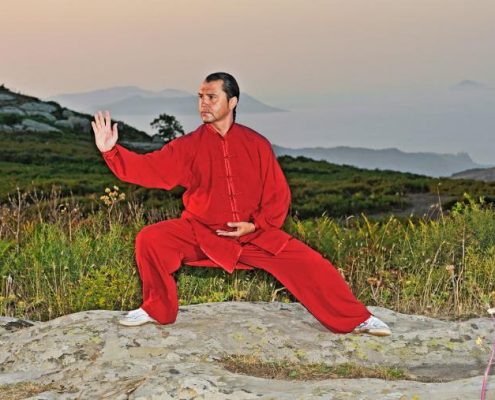
Giuseppe Paterniti is: Master of Qi Gong and Taiji Quan Chen style; Teacher of Bioenergetic Methods; Tuina Practitioner; Naturopath and Holistic Counselor; Conductor of Consciousness Awakening Workshops (TaoLab); Technical Director of the Alliance for Martial and Healing Arts (AMHA) and the “Stone Temple Tao” School in Treviso.
Medicine and science confirm that more than 90% of diseases, including autoimmune and neuromuscular diseases, have a psychosomatic origin. Stress and neurosis are, in practice, poison to our bodies. Such relevant and vitally important data should lead, at the very least, to serious and profound reflection capable of shaking our consciences.
Certainly there is a need for the recovery of ancient knowledge and remote wisdoms capable of reintegrating body, mind and spirit and, thus, restoring the normal energy and physiological balance of the individual.
For thousands of years, traditional Chinese medicine has offered invaluable tools for rebalancing and integration (Qi Gong, Phytotherapy, Dietetics, Tuina, Acupuncture), which have become popular around the world because of their proven effectiveness.
The dissemination of such methods, perhaps “reread” in light of new discoveries in the field of physics, could be a concrete response to the urgent need to “return to the center” in order to cultivate and preserve mental and physical health.
Liliana Atz’s work, which in the light of the most recent assertions of neuroscience skillfully integrates the principles of Chinese medical-philosophical culture with the psychology of the enneagram, thus stands as an important popular work that meets the needs of our modern times.
In a holistic path of reunification of the parts, EnneaMediCina re-proposes, in fact, a unified reading of the “Man” map, where the so-called “long life techniques” rise to a respectable role, thanks also to confirmations from scientific studies.

Master of Qi Gong and Taiji Quan
Flavius Daniel
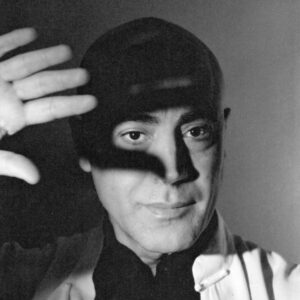
Flavio Daniele teaches Chinese martial arts and disciplines for mental and energy development. He is the author of several books, contributes to magazines, and has also produced instructional videos
Flavio Daniele, a top student of Master Guo Ming Xu, founder and guide of the Nei Dan School, combines undoubted martial skills with a high-profile humanistic and scientific culture. His mastery of how to handle a street fight or a fine philosophical discussion through the mysteries of the mind and inner energy make him a master of different caliber in the modern martial landscape.
His experience, gained with some of the best martial arts masters in China, his innovative teaching across different martial arts and different aspects (fighting, body art, science of mind), has been a turning point for many masters and practitioners because it has enabled each one to achieve, according to his or her potential, the best in practice regardless of the discipline practiced.
His practice began in 1967 with Japanese martial arts and Indian yoga. In the late 1970s and early 1980s, he began his first experiences with Chinese martial arts (Shaolin Gong Fu and Taiji Quan). He is vice president of Wacima (World Wide Association for Chinese Internal Martial Arts), a worldwide association between Chinese and Western masters founded by Master Xu.
Organizes scientific meeting seminars between Western science and Eastern wisdom with internationally renowned scientists and scholars. He collaborates and with major Italian (Samurai – Arts of the East) and foreign martial arts and spiritual sciences magazines.
Liliana Atz is a psychologist: thus, she has a Western cultural background, but at the same time, however, her thirst for knowledge has led her to question other dimensions and conceptions of Being, placed outside.
Her inner quest, at some point, led her to travel East, not only intellectually, but also, and especially, with the lived experience of the body.
Her interests thus led her to bring together scientific and humanistic culture, East and West.
This synthesis did not remain on a personal level, but resulted in the development of distinctive theoretical perspectives and methods of practice in the area of the subtle relationships between body, mind and life energy (Qi).
The work of Liliana, a devotee and practitioner of Oriental disciplines, should be read as a moment in the complex and multifaceted process of mediation between our culture and that of the East.
More than necessary mediation given the fact that the Eastern disciplines are increasingly “in fashion”: it is a long-standing fashion that began with the New Age movements of the 1960s, which has manifested itself in various forms some of which, while they have contributed to a certain diffusion, have resulted in the emergence of figures of practitioners, practitioners, most often improvised, who have carried on a distorted view of all that heritage of knowledge born and developed in the East.
If, therefore, we believe that such disciplines have something to say/do to us, we must find a mediation between them and us; and this is all the more true if we believe that the practices they theorize and suggest can also become our own.
So welcome “cultural mediation” works like this one done by Liliana Atz.
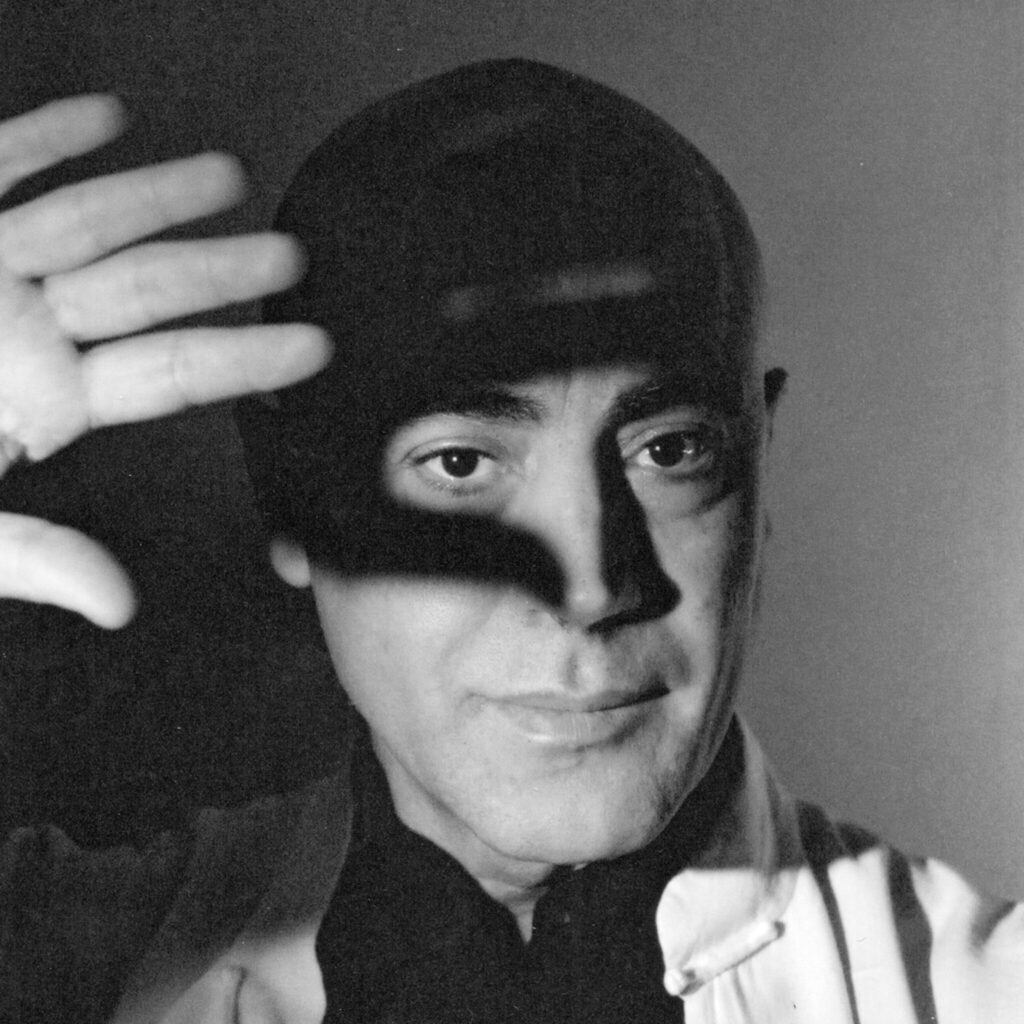
Enneagram Monthly’s Editor and Publisher
Jack Labanauskas
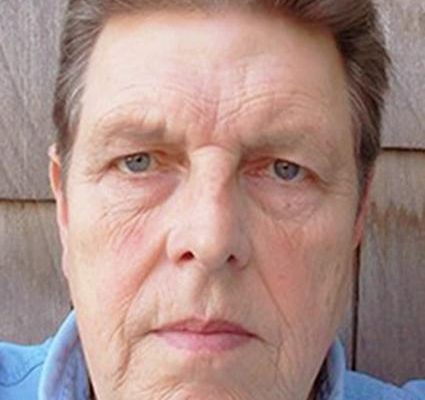
Jack Labanauskas – Editor and publisher of Enneagram Monthly – USA
“EnneaMediCina: the five ways of the soul.”
Is Liliana Atz’s new book (which I hope will soon be translated from Italian to English). In it he proposes a new approach to wellness and the integration of body, mind and spirit by involving different disciplines that unite and reinforce each other.
Liliana sees the Enneagram as a symbol that represents reality in its entirety, a dynamic model that encapsulates the Universe at the macrocosmic and microcosmic levels, grouping human beings under three centers and nine types.
She is also an experienced practitioner of Chinese medicine and sees parallels since this ancient medical-philosophical culture also views a human being as a combination of genetics and other factors including the cosmic environment, space and time, and the circumstances of our birth that when interacting with the environment gives rise to what we call personality.
Modern medicine, and that includes psychology, has tended to rely on detailed observations of systems, organs and tissues, behavioral quirks and the like; the most mechanical information, so to speak, but losing sight of the whole.
Dr. Liliana Atz’s Ennea-MediCina is a good step in the right direction toward recognizing and using principles that share a common goal of seeing the whole person.

Writer
Franco Bottalo
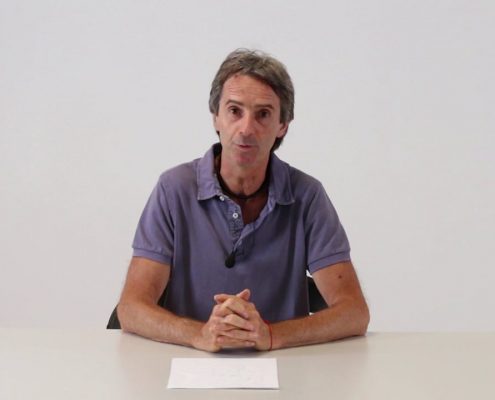
Franco Bottalo began the study and practice of Eastern Energy Disciplines in 1983. In 1997 he met Taoist Master Jeffrey Chong Yuen and has been following his teachings ever since, studying and practicing Classical Chinese Medicine, Dietetics, Qi Gong, Essential Oils and Taoism.
He has written several books in the field of Shiatsu and Chinese Medicine, published by Ibis Xenia.
Numbers and symbols are universal values that we find a all cultures and in all historical periods; they are somehow part of the human “genetic” baggage. They represent a different dimension than rationality on the one hand and emotionality on the other.
Number and symbol can be “explained” in rational terms, or they can be experienced emotionally, but their message incorporates these two components and goes beyond them. Number and symbol then become a kind of meditation, an invitation to work on oneself in order to penetrate the mysteries of life, which, precisely because they are mysteries, cannot be revealed, but only understood through personal work, of which number and symbol are instruments.
Liliana Atz dives into a journey that is not easy, comparing systems as culturally and spatially distant as Chinese medicine, Western medicine and the enneagram. It seems clear that he is familiar with these different views and is therefore able to grasp what they have in common, or rather what they have in common to tell us. It helps us discover how with different languages, due to spatial and temporal differences, they convey the same message.
It is a bit like if in a moment of crisis we turn to a friend for help and he gives us suggestions that we cannot fully understand; and then another friend tells us basically the same thing but with his own terminology, and then a third; until we can understand.
When one decides to climb a mountain, one may start from very distant points, even opposite, and the paths of ascent are very different; but the closer one gets to the summit, the closer the paths inevitably become, until upon reaching the summit one finds oneself together contemplating the landscape of knowledge.

Dr.
Erica Francesca Poli
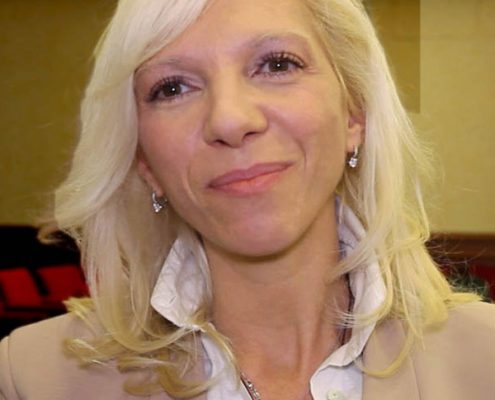
Erica Francesca Poli is a psychiatrist, psychotherapist and counselor. A member of scientific societies, including IEDTA (International Experiential Dynamic Therapy Association), ISTDP Institute and OPIFER (Organization of Italian Psychoanalysts Federation and Registry), she counts an in-depth and eclectic psychotherapeutic training that has provided her with the ability to deal with the world of the psyche as far as spirituality, developing a personal interdisciplinary and psychosomatic working method.
Continuously updating, through active participation and organization of courses, congresses and scientific publications, the study of integrative medicine with the implementation of traditional pharmacopoeia with phyto- and nutriceuticals, the use of innovative therapeutic techniques and strongly rooted in new neuro-scientific knowledge on the functioning of the mind, it does not limit itself to treating individual mental disorders, but takes care of and shows attention to the person in his or her totality of mind and body.
The ways of integration are really everywhere, for those who can find them.
The One manifests everywhere, in this holographic Universe, in which, today, the most modern science confirms the ancient alchemical wisdom that reads “as low so high, as high so low.”
The correspondences between inner world and outer world, ontogeny and phylogeny, microcosm and macrocosm are endless.
The EnneaMediCina project represents one of the countless reflections of this ubiquitous integration, this ubiquitous unity.
Whenever unity is manifested and escorted, it surprises, enlightens, moves.
Each time we rediscover the One happening.
This is also the case when reading the contributions of Liliana Atz and those who collaborate and participate in the EnneaMediCina project. A new surprise, another road of integration to go.
It was good to find brought together in EnneaMediCina two mighty systems of reading universal laws such as the enneagram and Chinese medicine: two seemingly distant worlds, West and East, touching each other, interpenetrating until they constitute a single vision.
As Gurdjieff tells us, the enneagram is a universal symbol, a key with which all knowledge can be deciphered: “an individual can stand alone, in the middle of the desert, trace in the sand an enneagram and read in it the eternal laws of the universe.” Few realize that symbols are much more than codifications of ancient knowledge.
They are living “things,” the very essence that animates them is that of an action, from the Greek sum-ballo, I put together: the action of connecting what seems separate, but is not. Thus symbols are starting points for action, they move our lives, more than we imagine.
Our unconscious proceeds in symbols and resonates with archetypes.
When we delve a little into the Enneagram, we find that the symbol gradually reveals deeper and deeper and more expansive planes of interpretation, until it dissolves into an intensity of thought that is almost unbearable for the mind.
A poignancy that requires entry into a state of consciousness other than the rational and ordinary, into a plane of reality that lies beyond the limits of the material and the dual, living in the bonds of meaning that unify everything and nothing. After all, this is the same plane in which the Chinese medical tradition breathes, in which energy and metaphor are far more real and true “things” than organs and tissues.
As we read in the Yellow Emperor Classic, “The subject of discourse…is the free flow and centrifugal and centripetal movement of divine qi (shen qi). It is not skin, flesh, sinew and bone.”
In Chinese welthanschaung, the body is the universe in miniature and is at the same time an undivided whole, to study which the physician must observe the functions, the balance of substances, and the flow of energy.
A dissected body is of no interest to the therapist, and it is significant that in Chinese medicine the typical image used to describe impending death is that of a separation of yin and yang.
Even the terms used to refer to the body in Chinese medicine are multiple, at least four. Of these three (shen, t’i and ch’u) have a broader denotation (denoting or implying the concept of personality or person), while the fourth, hsing (=form) is used only rarely. The Chinese body is above all a set of functions, animated by different energies, connected to as many natural elements.
Thus the Enneagram, which is known to most as a system for studying personality, when delved into, reveals an all-encompassing soul: it suddenly appears as a powerful map for the whole of reality, whether that of the person, of relationships, of a system, of the world itself.
In this sense, the conceptual corpus of Chinese medicine and the enneagrammatic symbolic key perfectly match and enhance each other.
Many years ago, I had a unique experience with the enneagram. I literally walked on the enneagram, as Gurdjieff would have liked.
I was on business to spend the month of July in England, at the University of Bath.
At that same time, I had the opportunity to meet Phil Mollon, whom I have discussed at length in my book Anatomy of Healing, as the one who initiated me into energy psychotherapy.
After his seminar, which was held in a Gothic hall of a wonderful church in the countryside surrounding the town of Bath, I was introduced to Prof Peter Hawkins, who was among the participants.
I learned only later that he was an Emeritus Chairman of the Bath Consultancy Group, Professor of Leadership at Henley Business School.
He simply told me that he had arranged refreshments for Phil and some colleagues at his home and gladly invited me.
His home was Barrow Castle, a 19th-century castle in the middle of the English countryside. I was amazed at such beauty, but the real wonder came later. Peter led us into the garden, with a shimmering look, the look of someone who has something fantastic in store.
A path, damp and green with moss, through the trees and then a clearing sloping into the valley and… A garden that, with carefully arranged hedges and stones, reproduced a perfect enneagram.
The Enneagram Garden: we began to walk along the circle and lines… We walked in groups on the enneagram, from one enneatype to another.
Peter talked about the Sufis. And in that moment I understood the sense of the flow that animates what is. We were in the symbol itself, welcomed into its arms: heart, mind and body together.
The symbol was tattooed on the earth and flowed into our legs and consciences. The eternal and dynamic symbol showed us in its very letting go the sense of flowing that is not consumed but transpires in infinite forms and manifestations.
Viewing the EnneaMediCina project gave me the sudden and intense return to consciousness of this experience.
I believe that the value and power of EnneaMediCina can be well represented by the metaphor of a journey on the symbols of two ancient traditions, in search of the essence.

Doctor
Marco D’Agostini
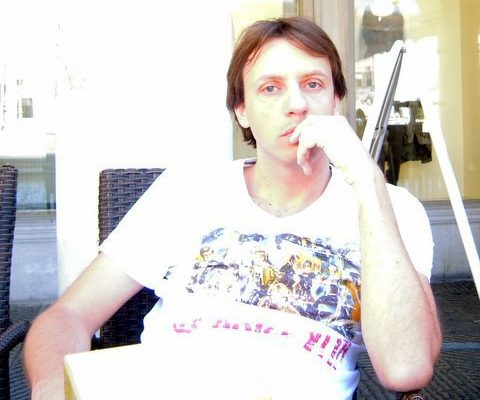
Dr. Marco D’Agostini – Uniud. He holds a degree in Multimedia Science and Technology and a doctorate in Multimedia Communication.
He has made several documentaries as a director and collaborated on films nationwide.
His field of research is mainly in audiovisual science popularization and personality psychology. Together with Prof. Franco Fabbro, he wrote the book “Enneagram and Personality. Types and Subtypes in Movie Characters” (Astrolabe, 2012).
The enneagram part, which I have studied in depth for several years, I believe is complete and correct in light of the revelations indicated by Claudio Naranjo.
His summary is straightforward and definitely understandable. I also find the juxtaposition of the two “disciplines” (enneagram and Chinese medicine) to be fascinating and certainly bringing new possibilities of inquiry for healthy balance and self-knowledge. I can only go so far.
I do not possess sufficient expertise to evaluate or express an opinion on the part related mainly to Chinese medicine.
Like a child standing in front of the sea for the first time, I can only convey the wonder for a boundless world waiting to be discovered.

Ennea-New
Eugenia Roselli
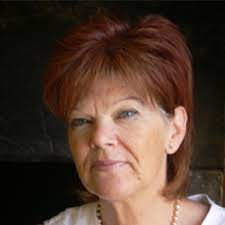
Those who feel a continuous inner drive aimed at the search for as yet unfathomed or mysterious knowledge are always on the path of prospects, forward directions, faith in growth, change, evolution, and the betterment of the world and man.
Guided by this drive and moved by the enthusiasm of those who believe that one has never arrived at one’s destination and that one can always put oneself on the line in the commitment of confrontation, in-depth study and dialogue is surely Liliana Atz who manifests in her complex and detailed work of EnneaMedicina not only that she is an expert connoisseur of Traditional Chinese Medicine but also a sensitive devotee of the Enneagram system of which, among other things, she has been a teacher for years.
By relating the two ways of reading the world of physical and mental health through the data of Eastern and Western medical culture she has grasped new paths and approaches, so her study turns out to be not only extremely original, sensible, but also qualitatively rich in information.
While cultures may have diversified over the centuries in reality they have not lost complementary aspects, links and similarities; history, the author reminds us, has only divided the tasks: while the West has given itself more to scientific-type research, the East has focused on the search for the inner and spiritual.
I am reminded of the biblical statement of man’s relationship with God that he is to love with ALL his heart, ALL his mind, ALL his soul, ALL his strength… That ALL stands for wholeness in the whole and explains how rationality, spirituality, emotionality, viscerality are a unicum, are the whole man in his indivisibility and wholeness. Time is doing justice to what we might consider an objective fact.
For TCM Mind and Body are the same spiritual reality in which the biological, emotional, experiential parts are involved in a constant flow of energy coming and going through the different cycles of life.
For the Enneagram viscerality, rationality and emotionality refer back to the 3 Centers, the 3 intelligences, the 3 brains, the 3 psychophysical dimensions of the person whose inner health and well-being depend on the balance one establishes from one’s energy level.
For TCM, there is no separability between body and psyche, and each organ contains a vegetative soul and emotion.
In the Enneagram we work for the same level of energy to be recovered by the person in his or her specific way of thinking, acting and feeling. The more connection, presence, interchangeability there is, the more balance will manifest as full and healthy well-being.
In this line, Atz, through continuous comparisons, connections, and parallels between the two systems, has provided us with fundamental lights and added new pieces to elements to be able to understand how in the recovery of the holistic view of the person, the issue of health, a primary good that man cannot give up or disregard, can be addressed more fully.
A.I.E. Information Bulletin.
September-December 2016

